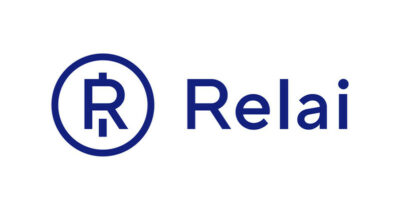
How the DORA Regulation applies to CASPs
The Digital Operational Resilience Act (DORA) is now fully applicable across the European Union. While all financial entities are concerned, crypto-asset service providers (CASPs) face unique technical and operational risks. This article provides a legal and operational guide to DORA compliance tailored for CASPs operating in the EU.
In February 2025, a single vulnerability was enough to hack ByBit for over $1.4 billion – a record now etched at the top of the leaderboard of rekt.news: cybersecurity is therefore not an option, but the sine qua non condition for the trust of regulators…and investors.
The DORA Regulation provides the normative response to this threat: since January 17, 2025, it mandates all financial actors, including CASPs, to adhere to a harmonized framework of digital operational resilience covering ICT risk governance, incident management, advanced penetration testing, and control of third-party providers.
Experience shows, however, that superficial compliance almost always fails; DORA requires structured anticipation, embedded today in the same strategic timeline as MiCA, followed by continuous management based on risk indicators and periodic reviews.
An extended scope of application
The regulation concerns almost all regulated financial entities in the European Union, including:
- crypto-asset service providers;
- credit institutions;
- investment firms;
- management companies;
- insurance companies;
- trading platforms;
- occupational pension institutions; and
- rating agencies, etc.
Third-party cyber service providers are also concerned insofar as they intervene in the critical functions of financial entities. This means that the regulation does not apply solely to the CASPs themselves, but also to all their technological partners.
For example, a custodian provider, a cloud host storing transactional data, or an IT security provider responsible for monitoring network flows will be subject to certain obligations under the regulation. These entities must comply with the contractual, technical, and organizational requirements imposed by regulated entities, failing which they will not be able to engage with CASPs.
However, certain exemptions are provided for the following entities:
- alternative investment fund managers;
- insurance and reinsurance companies;
- institutions managing pension schemes with fewer than fifteen members; and
- insurance, reinsurance, and ancillary insurance intermediaries that are microenterprises or small or medium-sized enterprises.
Key obligations under DORA
Entities must adopt a cyber risk governance framework based on several pillars:
- appointment of a DORA officer (CISO);
- involvement of the governing body, responsible for approving the resilience strategy and overseeing its implementation (Example: establishment of an ICT steering committee with the CISO, the DPO, the CTO, and/or the legal officer to assess risk indicators (number of ongoing critical vulnerabilities, client SLA compliance rate, etc.);
- identification of critical assets and cyber dependencies;
- development of a business continuity strategy including IT recovery plans;
- monitoring and management of incidents, with an obligation to notify major incidents to the authorities (Example: implement a monitoring dashboard: KPI including “Time to Detect” (TTD) and “Time to Recover” (TTR) made available to the ICT Committee.);
- conducting regular resilience tests, including advanced tests every three years for critical entities; and
- regulation of relationships with cyber service providers, with strict contractual obligations.
| Excerpt of essential clauses tracking | |||
| Essential clause | Description | Measures | Frequency |
| Security requirements | The provider undertakes to implement cryptographic controls (encryption of data at rest and in transit). | AES-256 encryption for sensitive data; annual penetration tests. | Annual |
| Notification / Incident Management | Obligation to notify any security breach or cyber incident within a maximum period of 24 hours. | Notification SLA: within 24 hours + action plan within 48 hours; monitoring via dashboard | Quarterly |
| Droit d’audit et de contrôle | The AMF/ACPR reserves the right to audit the provider’s infrastructures and processes on-site or remotely. | Full access to logs; obligation to provide ISO 27001 reports. | Biannual |
| Business continuity | The provider must have a Business Continuity Plan (BCP) and Recovery Plan (RP) tested annually. | Switch tests, PRA exercise each year, report to the CFO within 30 days. | Annual |
Entities must also maintain an up-to-date incident register, a cyber service provider register, and implement alert indicators.
Sector-specific risks for CASPs
Beyond general cyber requirements, CASPs must consider sector-specific risks related to their activities and the crypto sector:
- conservation of crypto-assets: the management of custodial or non-custodial wallets entails increased risks in the event of compromise of private keys;
- particularly high risk of hacking or theft: CASPs are prime targets for sophisticated attacks (phishing, ransomware, smart contract attacks), with often significant and irreversible impacts; and
- complex technical environment: the ecosystem relies on a chain of interdependent actors – liquidity providers, technological custody providers, blockchain infrastructures, oracles, etc. These dependencies create increased vulnerabilities to manage within the DORA framework.
Application of a principle of proportionality
DORA provides for a specific regime applicable to micro-enterprises, i.e. those which, according to the European definition, employ fewer than 10 persons and generate a turnover or total balance sheet of less than 2 million euros.
Although subject to the principles of the Regulation, these entities benefit from proportionate measures and reduced requirements, particularly in the following areas:
- documentation of cyber policies;
- obligations regarding advanced penetration testing; and
- detailed reporting requirements;
The objective is to avoid regulatory overload for these structures while ensuring an adequate level of protection and resilience.
Monitoring and sanctions
National authorities are vested with enhanced powers: they may conduct on-site inspections, require documents, order corrective measures, and even impose fines. Each Member State may also introduce criminal sanctions. Documentation of policies and traceability of actions are therefore essential. The AMF expects stakeholders to address the issue at the application stage and to be able to respond to a genuine compliance approach.
How to build a DORA compliance RoadmapHere is a concrete roadmap for CASPs wishing to comply with DORA: Appoint a DORA officer (CISO)Designate an internal point of contact (for example, a cybersecurity or operational risk manager) responsible for coordinating compliance actions and ensuring the connection with the general management. Assess your DORA maturityConduct an internal audit to:
Determine the applicability of the micro-enterprise regimeIf this regime comes into effect, it allows for the precise establishment of the DORA requirements applicable to the regulated entity. Establish a cyber risk management frameworkDevelop a formalized policy incorporating:
Structure cyber incident management
Regulate contracts with cyber service providersReview existing contracts to include:
Plan digital resilience tests
Train and raise awareness among teamsOrganize training sessions on cybersecurity and incident management, particularly for:
|




